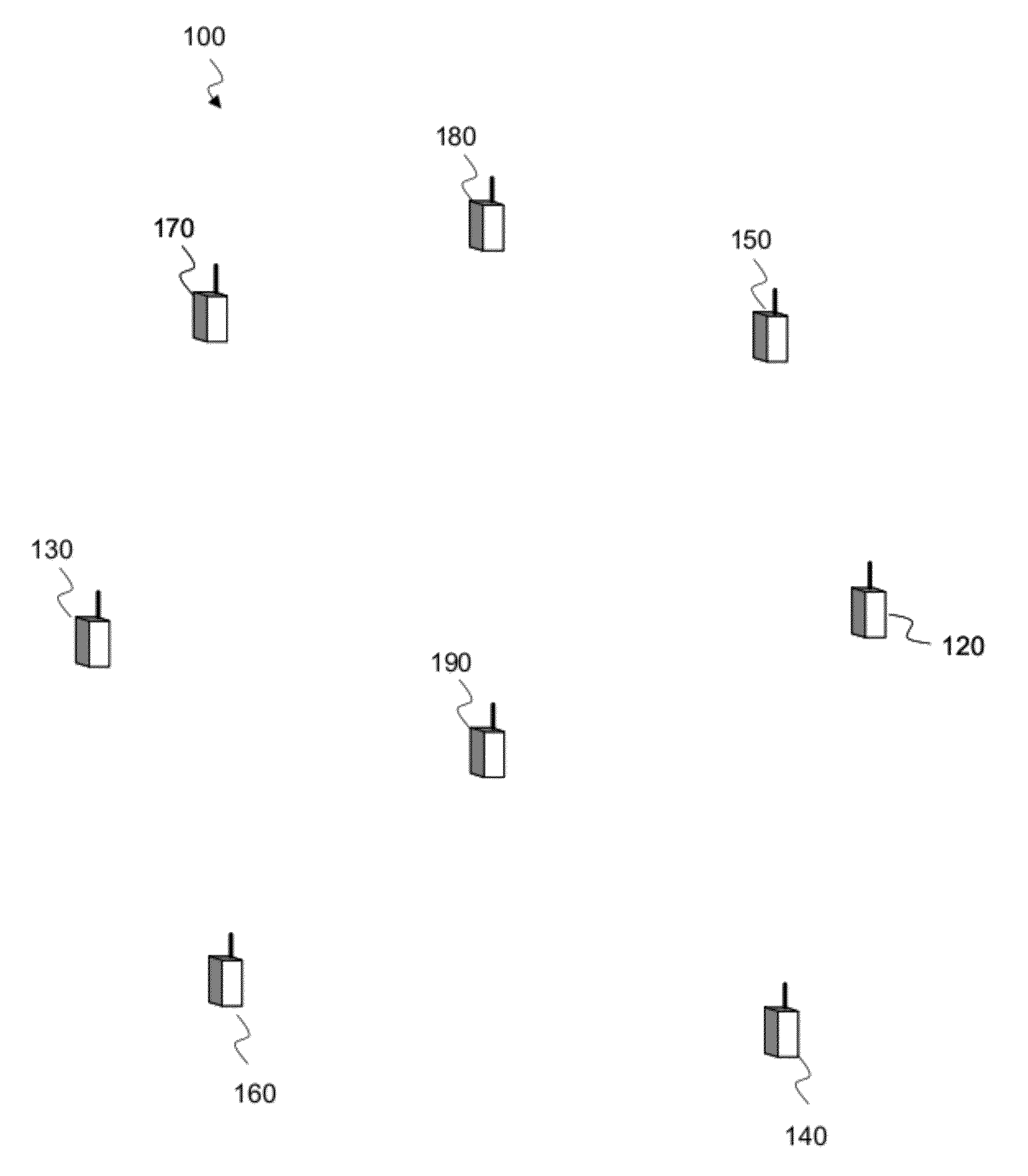Method and system for managing communications in a wireless communication network
a wireless communication network and wireless communication technology, applied in the field of wireless communication networks, can solve the problems of reducing the overall transmission bit rate, data loss on the communication path, and system is sensitive to interference and shadowing phenomena, so as to prevent frequent reconfiguration and generate network instability
- Summary
- Abstract
- Description
- Claims
- Application Information
AI Technical Summary
Benefits of technology
Problems solved by technology
Method used
Image
Examples
first embodiment
[0251]The remainder of the description will refer to the first embodiment, but the invention may implement any embodiment.
[0252]Once the monitoring area, where the obstacle has been detected, is selected, selection is made, from the transmission links in the network, of a subset of monitoring links that belong, at least partly, to the monitoring area. Monitoring the perturbation level of each link belonging to this subset of monitoring links allows determination of the movement of the mobile obstacle inside the network coverage area.
[0253]“Belonging at least partly to an area” means that at least a part of the transmission link (let consider the LOS path between two devices for example) crosses the area or defines an edge of that area. From this definition, it is clear that a transmission link belonging at least partly to the monitoring area is highly liable to experience interference with the mobile obstacle detected within that area.
[0254]In one embodiment, the selected subset of ...
second embodiment
[0267]In a second embodiment, the steps of FIG. 8 are centrally performed by a central managing device which gathers the necessary information from the network devices 120, 130, 140, 150, 160, 170, 180, 190 of the network 100 and decides for these network devices.
[0268]In what follows, the device performing the relay scheme computation steps is referred to as a computing device.
[0269]As shown in the figure, in a first step S600, a mobile obstacle is detected on one or more transmission links, for example by detecting, on such a link, a perturbation level higher than a predefined threshold.
[0270]This detection may be performed on any of the transmission links of the network when no mobile obstacle is currently present in the network coverage area. It may also be performed on one of the monitoring links of the monitoring area, as defined above in relation with FIG. 7 or below in step S602.
[0271]For instance, the receiving network device 150 detects an attenuation of the signal receive...
PUM
 Login to View More
Login to View More Abstract
Description
Claims
Application Information
 Login to View More
Login to View More - R&D
- Intellectual Property
- Life Sciences
- Materials
- Tech Scout
- Unparalleled Data Quality
- Higher Quality Content
- 60% Fewer Hallucinations
Browse by: Latest US Patents, China's latest patents, Technical Efficacy Thesaurus, Application Domain, Technology Topic, Popular Technical Reports.
© 2025 PatSnap. All rights reserved.Legal|Privacy policy|Modern Slavery Act Transparency Statement|Sitemap|About US| Contact US: help@patsnap.com



